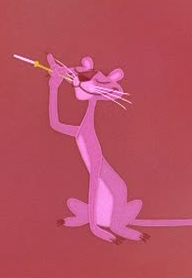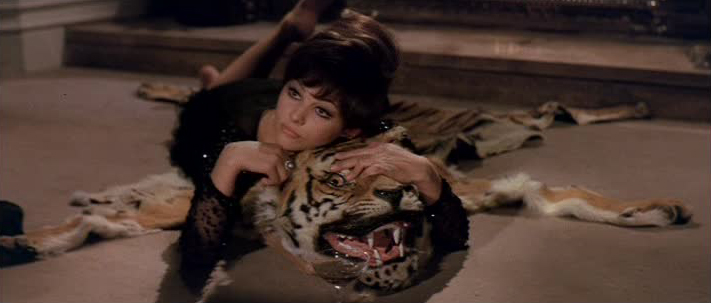 Tim here, extending our unexpected and unplanned tribute to 50-year-old Peter Sellers movies by one day, following Diana’s lovely tribute to The World of Henry Orient. For today marks the 50th anniversary of the U.S. release of The Pink Panther, the arch-‘60s caper film that begat Sellers’ iconic Inspector Jacques Clouseau, the pratfall-prone Frenchman who remains the actor’s most famous character this side of a certain wheelchair-bound ex-Nazi (and Dr. Strangelove ALSO opened in 1964, which was just an all-around great year for Sellers).
Tim here, extending our unexpected and unplanned tribute to 50-year-old Peter Sellers movies by one day, following Diana’s lovely tribute to The World of Henry Orient. For today marks the 50th anniversary of the U.S. release of The Pink Panther, the arch-‘60s caper film that begat Sellers’ iconic Inspector Jacques Clouseau, the pratfall-prone Frenchman who remains the actor’s most famous character this side of a certain wheelchair-bound ex-Nazi (and Dr. Strangelove ALSO opened in 1964, which was just an all-around great year for Sellers).
The film itself is a fascinating relic, a by-turns hilarious and lumpy encapsulation of what European high society looked like as filtered through the comic sensibilities of Blake Edwards of Tulsa, OK. Scenes of breathless physical comedy rub elbows with elegant caper film machinery and deadening longeurs as Claudia Cardinale rolls around on a tiger skin while suffering from a wobbly case of dubbing. [more...]

And then there’s the mid-film musical number, so utterly removed from the rest of the action that words like “good” and “bad” don’t even begin to apply.
It was a massive hit that spawned numerous imitators in which classy thieves and beautiful women crossed paths (including the Oscar winning Topkapi and the Audrey Hepburn confection How to Steal a Million), and as a document of what was, for a brief span, considered the height of sophisticated comedy, it’s invaluable. But that’s not what I’ve brought you all together to talk about: instead, let’s take a closer look at its biggest claim to fame, even above Sellers’ performance. Coming a year after Maurice Binder’s groundbreaking titles for Dr. No, the silent cartoon that DePatie-Freleng Enterprises made to open up The Pink Panther is one of the watershed moments in the explosion of Playful and Stylish Opening Credits that happened all through the 1960s.
DePatie-Freleng was the company made up of two old animation workhorses, director/artist Friz Freleng and producer David H. DePatie, refugees from the shuttering of the Warner Bros. cartoon studio in 1963. The title animation for The Pink Panther wasn’t just a lark for the two men, it was a calling card – their big chance to show what they could do despite beng deprived of the support of a big company like Warners. It was a hit beyond anything that could be imagined: the character proved to be so popular that he was spun off into a long-lived series of cartoons beginning in December 1964. They were like nothing else in America at the time: combining the simple lines of limited animation with physical comedy generally from the Looney Tunes “funny animal” school but executed with a looser, insinuating line than either of them. The first short, The Pink Phink, went on to win the Best Animated Short Oscar, and the shorts remained hugely popular, with the Pink Panther remaining in the public eye even now, if only as a fiberglass insulation pitchman.

But it all tracks back to those first credits, one of the best pieces of animation of the 1960s. Aided, incalculably, by Henry Mancini’s justly iconic theme song, the presentation of the panther as a self-satisfied troublemaker isn’t tremendously original in and of itself, but the cleanness and creativity of the jokes – not to mention such in-retrospect obvious notions like having the “screenplay by” credit show up on a typewriter – were unlike anything else going on, and even after a half-century, the marriage of color, line, and music hasn’t lost any of its flair.
It’s slinky, that’s what it is. Slinky and cunning and clever, as fully befits a jungle cat with no natural threats to his dominance. There’s plenty of delight throughout the movie, but it’s the opening that sets the tone, and in no small respect remains the most memorable part of the whole; it still represents the best of ‘60s Jet Set comedy and cool, even as the Jet Set itself has become some ancient curiosity that barely makes sense anymore. Not a bad legacy for a few sleek pink lines wearing a smirk.
